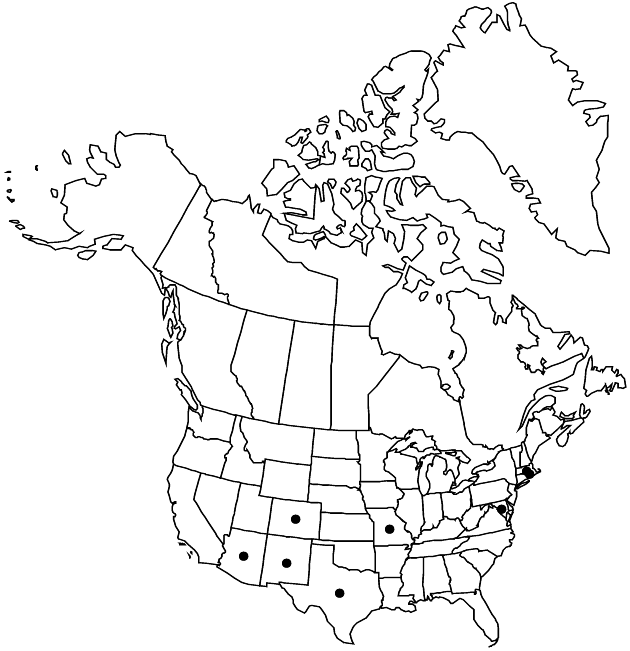Cosmos parviflorus
Syn. Pl. 2: 477. 1807.
Plants 30–90 cm, glabrous or sparsely pubescent. Leaves: petioles ca. 0.5 cm; blades 2.5–6.5 cm, ultimate lobes to 1 mm wide, margins usually spinulose-ciliate, apices acute to obtuse. Peduncles 10–30 cm. Calyculi of spreading to reflexed, linear-oblong to narrowly lanceolate bractlets 6–9 mm, apices acute. Involucres (3–) 5–10 (–15) mm diam. Phyllaries erect, oblong, 5–8 mm, apices acute. Ray corollas white to rose-pink or violet, laminae cuneate-obovate, 5–9 mm, apices dentate. Disc corollas 4–5 mm. Cypselae 9–16 mm, setulose; pappi of 2–4 erect awns 2–3 mm. 2n = 24.
Phenology: Flowering summer–fall.
Habitat: Open or forested slopes and canyons, sometimes in disturbed and cultivated areas
Elevation: 100–3000 m
Distribution

Ariz., Colo., Md., Mass., Mo., N.Mex., R.I., Tex., Mexico
Discussion
Within the flora area, Cosmos parviflorus is native only in the southwestern United States.
Selected References
None.
Lower Taxa
"broader" is not a number.